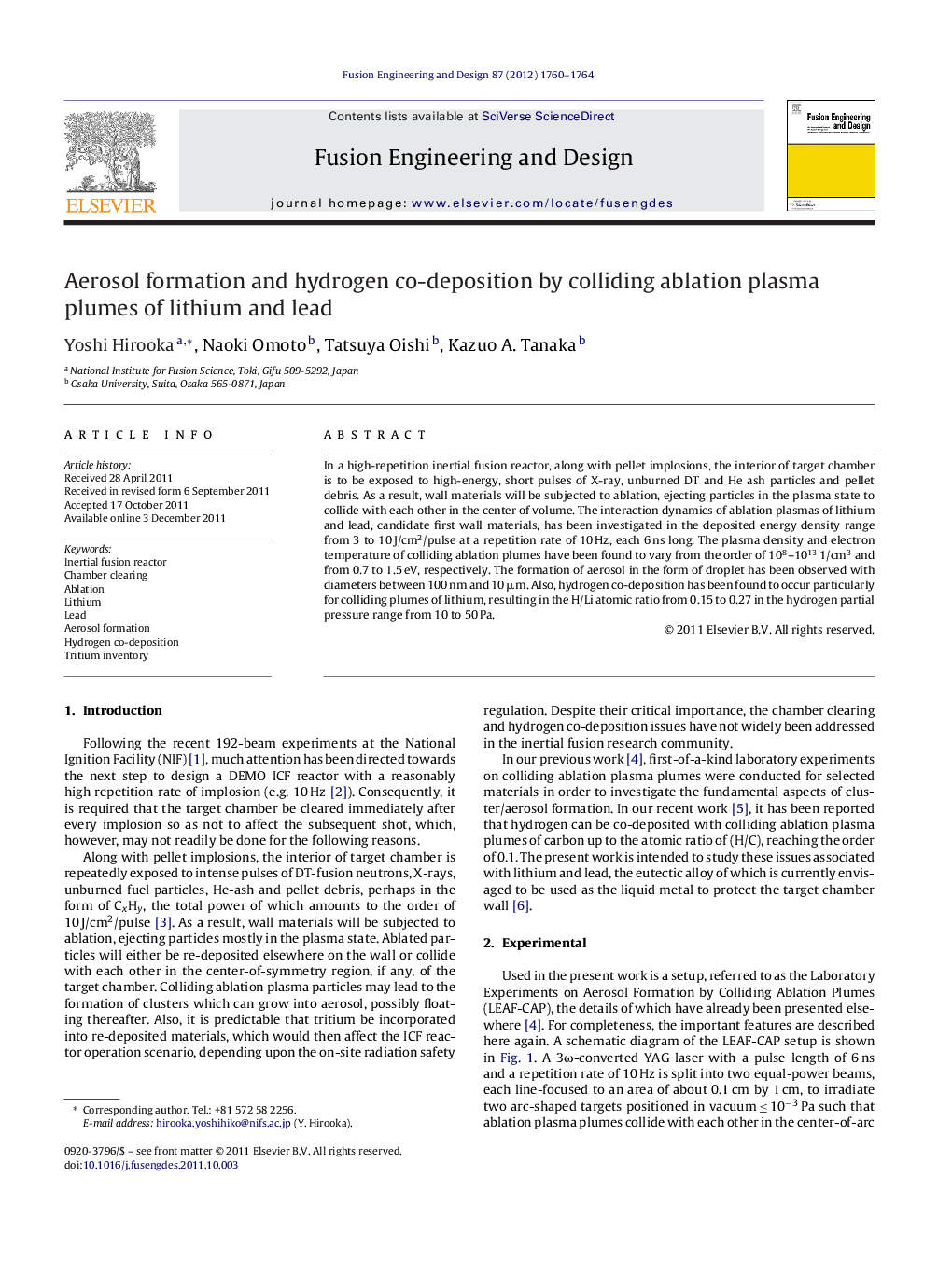| Article ID | Journal | Published Year | Pages | File Type |
|---|---|---|---|---|
| 271580 | Fusion Engineering and Design | 2012 | 5 Pages |
In a high-repetition inertial fusion reactor, along with pellet implosions, the interior of target chamber is to be exposed to high-energy, short pulses of X-ray, unburned DT and He ash particles and pellet debris. As a result, wall materials will be subjected to ablation, ejecting particles in the plasma state to collide with each other in the center of volume. The interaction dynamics of ablation plasmas of lithium and lead, candidate first wall materials, has been investigated in the deposited energy density range from 3 to 10 J/cm2/pulse at a repetition rate of 10 Hz, each 6 ns long. The plasma density and electron temperature of colliding ablation plumes have been found to vary from the order of 108–1013 1/cm3 and from 0.7 to 1.5 eV, respectively. The formation of aerosol in the form of droplet has been observed with diameters between 100 nm and 10 μm. Also, hydrogen co-deposition has been found to occur particularly for colliding plumes of lithium, resulting in the H/Li atomic ratio from 0.15 to 0.27 in the hydrogen partial pressure range from 10 to 50 Pa.
